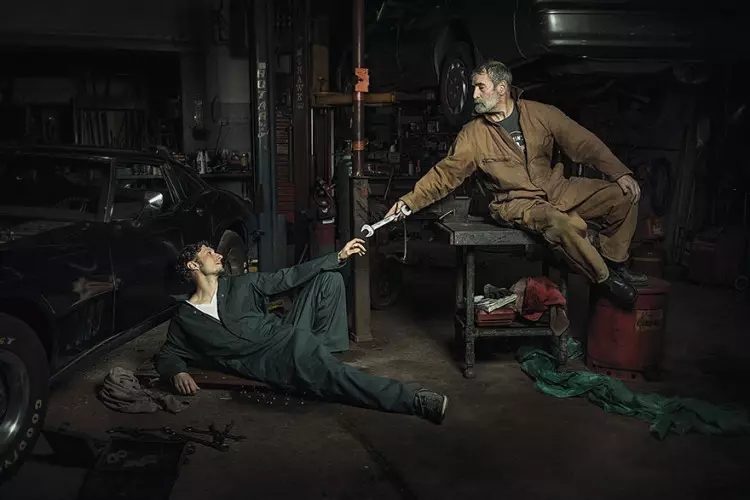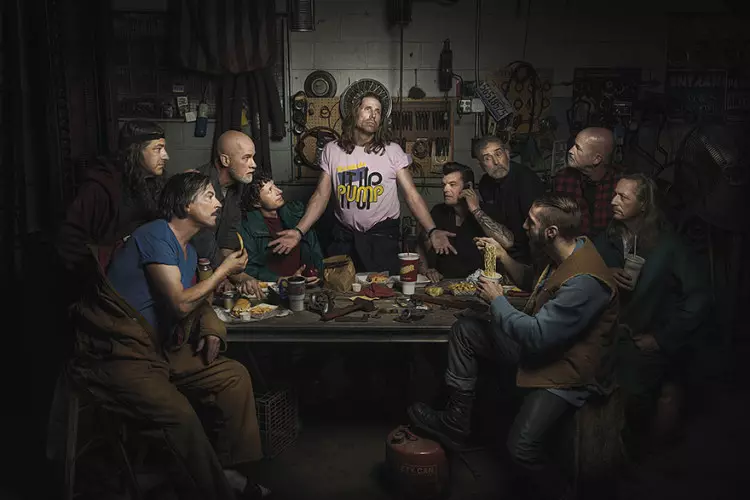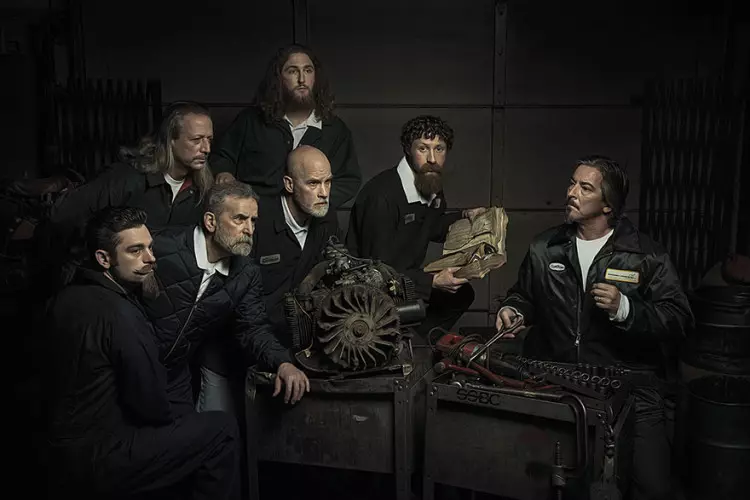It is a fact that the art that fascinates all car lovers is more or less similar to the smudges of rubber that radiates tar off during a drift. But there were those who went further…
Well then…there were those who wanted to find their way out to explore culture and used a mechanical workshop as a setting to recreate some of the famous Renaissance paintings. Yes. They read well.Paintings such as the Mona Lisa and The Last Supper by Leonardo da Vinci, The Birth of Venus by Botticelli are just a few examples that founded a forged spirit of new ideals in Renaissance painting. We can't recreate them with semi-synthetic engine oil (at least no one has remembered that yet), but we can position them with an auto repair shop in the background. And that must have been Freddy Fabris' idea…
Fabris is a photographer who was born in New York, but who grew up on the streets of Buenos Aires, Argentina and has been working with portraits and conceptual images for over 20 years. His most recent brilliant idea is called Renaissance, which is to reproduce some of the original Renaissance paintings. By this time, they are already guessing which was one of the chosen scenarios.
SEE ALSO: Hyundai Santa Fé: the first contact
Speaking to the Huffington Post, Fabris says that he always wanted to reward Renaissance paintings, but recreating them just as photographs would not be enough.
“I wanted to respect the aesthetics of the paintings, but I needed to include a conceptual footprint that would add a new 'layer' to the original works. Take them out of their original context, but still retain their essence. I happened to find an old garage in the midwest of the USA, and this is what started the series. The place begged to have something photographed there, and slowly ideas began to take their place.” | Freddy Fabris
Fabris chose three of the most emblematic paintings: The Creation of Adam by Michelangelo, The Anatomy Lesson of Doctor Tulp, by Rembrandt and the aforementioned Last Supper by Da Vinci. The basic composition of the scenes remains faithful, but the elements change drastically.

In Adam's Creation, rather than watching God create the first Man, we can see a learned mechanic handing a screwdriver to a would-be career seeker. The symbolism is strong, it's as if the key wasn't the only thing being broken, but also the knowledge of several years turning engines. But this subjectivity of interpretation is left to your imagination...
In the Last Supper, the remake needed a resize and some screws left in the box: the table is definitely tighter and three apostles are missing, but the result is still sensational. Notice the wheel behind the head of Jesus, perfectly playing the role of the crown of thorns. The artist even went down to the smallest detail.

Last but not least is Rembrandt's The Anatomy Lesson of Doctor Tulp. In the original work and as the name implies, we have an anatomy class taught by Nicolaes Tulpdo to a group of apprentice doctors (the story says that the scene is true and took place in 1632, when only one dissection per year was allowed and that the body should preferably be that of an executed criminal). In the new “manly” version, the object under study is multiplied and there are a thousand and one car parts.

Images: Freddy Fabris
